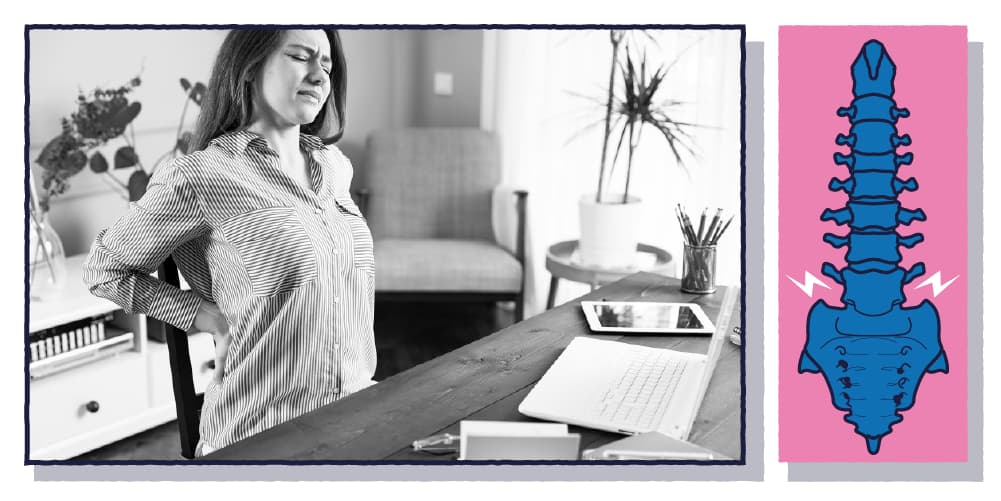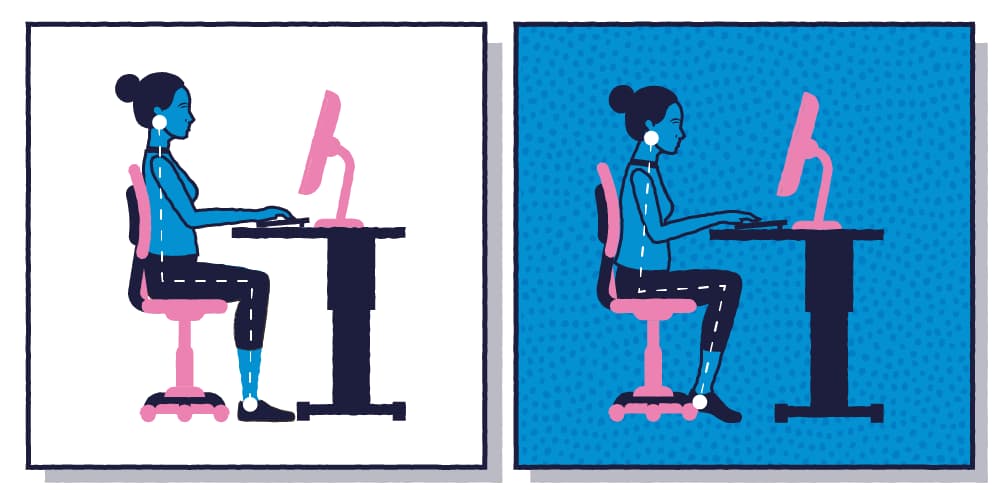If those home offices aren’t set up properly however, with the right furniture and support, a lot of people will find that their setup is actually causing them some discomfort and pain thanks to their extended working hours in the same seat. This can particularly take its toll on your back, where the discomfort is most keenly felt.
The good news is, there are a number of small steps you can take to ensure that your back is getting the support it needs to help protect against back pain. In this blog, we’re going to take a look at how you can make your back as comfortable and as supported as possible for your working day.
1) Keeping better posture

Posture is key when you’re working in front of a desk all day. It’s all too easy to hunch over a laptop or to slide down in your seat, but both of these positions, especially when held throughout the day, can start to seriously take their toll on your back.
When you’re working, try to always remember that your spine should be aligned with your neck as much as possible – the easiest way to do this is to ensure your eyes are matched up to, or as close as possible, to the top of your laptop screen. You can keep your shoulders relaxed too – it’s less about keeping a rigid posture and more about keeping your spine lined up with your head and neck.
2) Buying the right chair
It might seem sometimes that your chair can’t have that much of an impact to your working environment. The truth is, having the right seat for your entire working day can make all the difference in the world.
Well-designed office chairs, specifically designed for office work, give your back the essential pelvic and lumbar support it needs. Well-supported pelvic and lumbar regions can take the weight off your back, while also giving your body the room to breathe and circulate – helping relieve the symptoms of not only back pain, but also headaches and fatigue.
3) Taking breaks
The worst thing you can do for your back when working from home is to spend your entire day sitting down, especially if you don’t have access to a suitable office chair. For this reason, it’s definitely important to stand up and take a walk every now and then, to take a break from your workspace and to take the strain off your back and put it on other unused muscles.
It doesn’t have to be a long walk out of the house either. Just stand up and make a cup of tea or coffee perhaps, or fix yourself a glass of water – more short breaks are better than fewer long breaks.
4) Stretching
Taking a few minutes out of your working day sat at a desk to carry out stretches can do your lower back pain and middle back pain the world of good. It’s especially handy for keeping your lumbar regions of your back in good condition.
There are a range of stretches you can choose from, many of them simple enough for you to be able to do in your home office. Incorporating stretches in your daily routine should always be your first step in lumbar pain treatment and lower back pain treatment.
5) Shifting your position

One thing that often gets overlooked with sitting at a desk is the need to change position every now and then. Ideally you should be doing this every 30 minutes to shift the pressure on your body to different muscles and areas.
If you’re taking regular and frequent breaks then you won’t have to worry about this, but if you don’t have the time to be away from your desk, then just something simple like leaning forward or backwards can do the trick. Make sure you don’t compromise your good posture while doing this however, always keep your back straight wherever possible.
At Ramsay Health Care we offer a full range of diagnosis and surgery options for back pain and other related problems. You can find out more about our spinal care and other orthopaedic treatments, or if you’d like to talk to us about any knee or joint problems you’re having, don’t hesitate to get in touch.